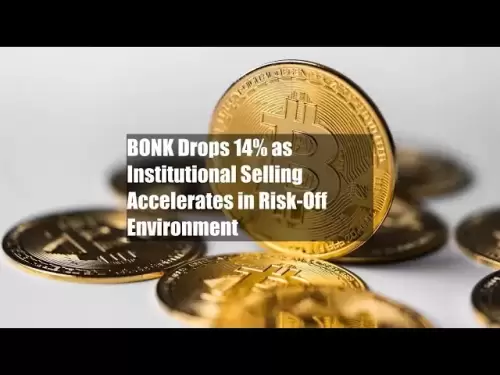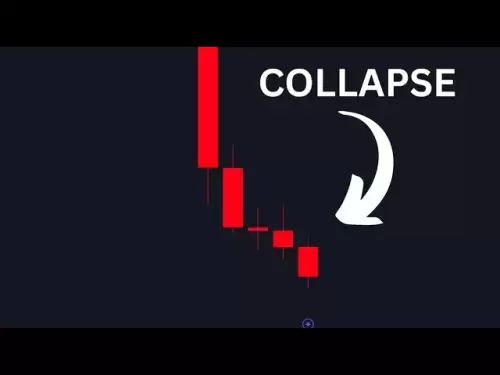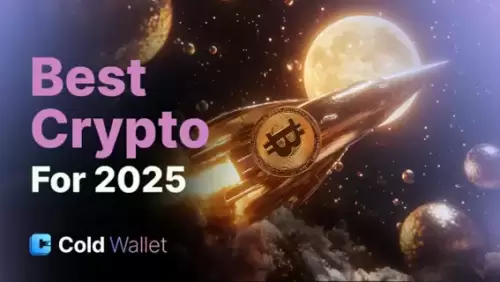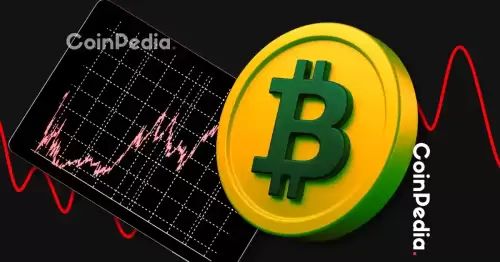 |
|
 |
|
 |
|
 |
|
 |
|
 |
|
 |
|
 |
|
 |
|
 |
|
 |
|
 |
|
 |
|
 |
|
 |
|
Cryptocurrency News Articles
SOL SIMD 228 proposal reaches quorum, with 70% voting in support.
Mar 14, 2025 at 03:09 pm
SIMD 228 proposes a static curve that reduces the issuance of SOL based on the staking participation rate.

@solana SIMD 228 proposal has reached quorum, with 70% voting in support and voting set to end at the 755th epoch, approximately 52 hours from now.
What is SIMD 228?
What are the reasons for support?
What are the reasons for opposition?
Let's take a closer look.
SIMD 228 proposes a static curve that reduces the issuance of SOL based on the staking participation rate. With the current staking rate at 64%, after a smoothing period following the implementation of SIMD 228, the inflation rate of SOL will drop to about 0.92%. Notably, when the staking participation rate falls below 50%, the curve becomes more aggressive, resulting in a new issuance rate higher than the current fixed issuance plan, which is particularly evident when the participation rate equals 1/3 (approximately 33.3%).
Reasons for Support
Reason 1: Solana is currently paying too high a cost for security.
The most effective token issuance rate is the minimum level required to ensure network security. The original authors of the proposal (@TusharJain_, @kankanivishal) pointed out that a fixed issuance plan was reasonable when Solana was still an emerging ecosystem with no real economic value (REV). At that time, relying on token issuance to attract staking and ensure security was necessary.
However, considering the current economic activity and fee (REV) levels of the network, the fixed issuance plan has become less reasonable, as it issues more SOL than is currently needed to ensure network security. This is known as the “leaky bucket problem,” which ++@MaxResnick1++ defines as the loss transfer caused by taxes or intermediaries with market power (such as high-commission validators like Coinbase or Binance).
Reason 2: Nominal yield vs. real yield.
As ++@y2kappa++ pointed out, SOL issuance is an accounting trick that only dilutes non-staked SOL holders and leads to artificially high yields, incentivizing indiscriminate staking without distinguishing between nominal (based on issuance) and real (based on REV) yields. As Solana matures, the network should become economically sustainable and rely entirely on fees, reflecting the true economic demand for transactions on the network.
Reason 3: The market is the best mechanism for price determination, and Solana's issuance should be no exception.
The conclusion of the above arguments is that even if SIMD 228 is not perfect, a market-based approach is a significant improvement over the current fixed issuance plan, which is arbitrary and inefficient, leading to increased selling pressure.
Reasons for Opposition
Opposition Reason 1: SOL inflation subsidizes institutional allocation.
While token holders should only care about real yields, custodians and ETP issuers are the opposite. They are incentivized to pursue the highest nominal yields possible because they charge commission rates and are not exposed to the underlying assets (thanks to ++@smyyguy++'s framework).
Taking the staked SOL ETP as an example, ETP issuers take a portion of the staking rewards but are not exposed to the underlying asset (i.e., SOL). Therefore, high nominal yields incentivize these players to sell SOL products to customers to increase their own revenue. From this perspective, what Resnick calls the “leaky bucket problem” is actually a distribution of expenditure (@calilyliu). In my view, this is the strongest argument against SIMD 228.
Opposition Reason 2: Institutional appeal.
This is related to the above point. According to @calilyliu, changing the fixed issuance plan just before institutional interest peaks and the Solana ETF launches (possibly this year) is a strategic mistake. Liu's core argument is that a market-based approach would make inflation unpredictable and unstable, reducing SOL's appeal as an asset.
The counterargument is that SOL is a highly volatile asset, and its 7-8% yield is not a reason to buy; those who stop buying SOL due to declining nominal yields did not understand its investment logic from the beginning.
Opposition Reason 3: Impact on validator profitability / decrease in validator numbers.
The voting fees priced in SOL are currently the largest expense for validators. Some (@David_Grid) are concerned that SIMD 228 could impact the profitability of small validators, especially if network activity and REV decrease from current levels. In other words, the inflation curve of SIMD-228 could lead to a shrinkage of the validator pool, although some estimates suggest this impact is limited (under a 70% staking rate scenario, according to estimates by @0xIchigo and @lostin).
There are also some minor concerns about the potential impacts of SIMD 228, including its effects on Solana DeFi rates, whether inflation will increase SOL selling pressure, and insufficient discussion of the proposal.
Regardless of how validators vote, it
Disclaimer:info@kdj.com
The information provided is not trading advice. kdj.com does not assume any responsibility for any investments made based on the information provided in this article. Cryptocurrencies are highly volatile and it is highly recommended that you invest with caution after thorough research!
If you believe that the content used on this website infringes your copyright, please contact us immediately (info@kdj.com) and we will delete it promptly.






























































